The 3rd Hot Wheels Legends Tour which was run recently saw Malaysia being the first host as well as the first Asian country to be invited to join the event. Art of Speed hosted the event which is normally held on-ground but had to be conducted online this year due to the COVID-19 pandemic. However, that didn’t see diminished interest and over 1 million Hot Wheels fans across the globe tuned in to watch the livestream of the Finals.
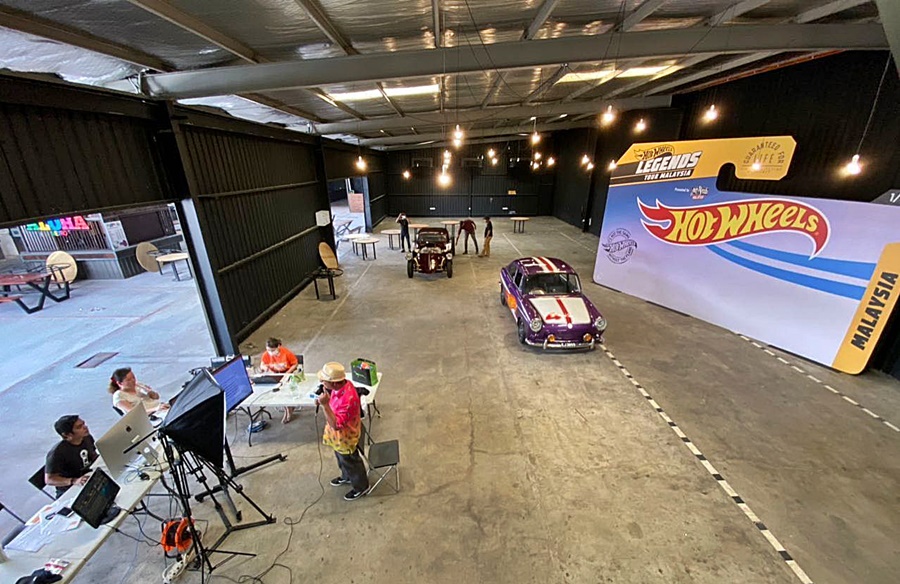
67 local entries
Twelve out of the 67 local entries were chosen to be showcased before the panel of the judges made up of respected Hot Wheels designers. After the votes were cast, it was Johor-native Ravinder Singh who clinched the coveted spot in the Finals as one of 13 international entries with his ‘Mercenary’, a modified Morris Minor.
Each entry was judged on three criteria: Authenticity, which is a measure of how well a car captures that genuine Hot Wheels spirit; Creativity, based on how unique the build is; and Garage Spirit, which carries the unmistakable air of ‘built not bought’.
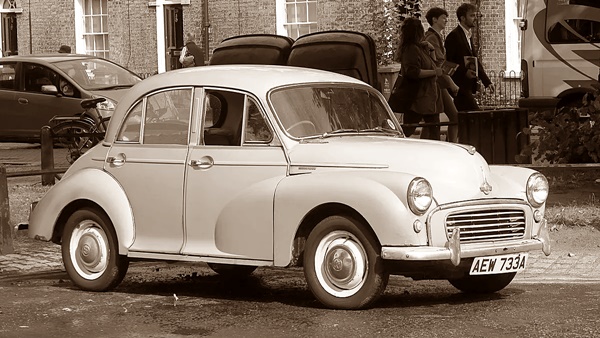
Created from the Morris Minor
Ravinder’s ‘Mercenary’ carried a clear inspiration from American hotrods but was created from a British Morris Minor. The build was praised for its use of period-correct tyres and unique choice of parts – most of which aren’t available in the USA – giving it a distinct and memorable silhouette. The motorhead described the Mercenary as ‘built for himself to bring his vision to life’.
Of the thousands of submissions from around the world, 13 finalists were chosen with the winner being Riley Stair from California. His 1970 Pontiac Trans Am will be immortalised as an iconic 1:64 Hot Wheels diecast model.
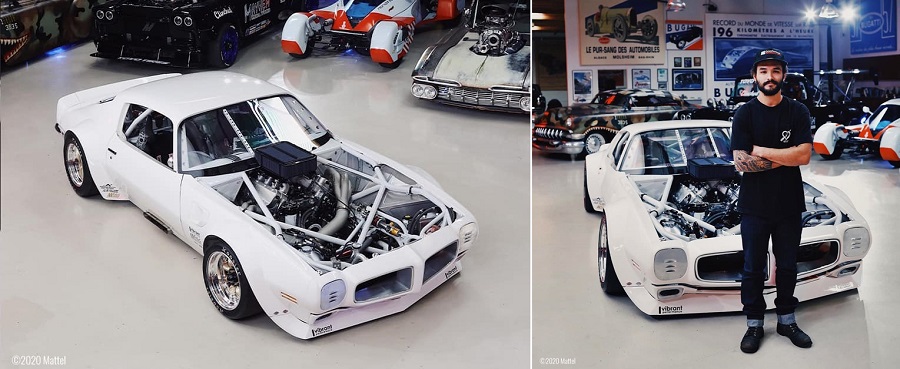
Ravinder Singh’s journey to the Finals of the Tour is not insignificant. For years, Malaysia has been host to a healthy and thriving community of car fanatics who celebrate their hobby at events like Art of Speed Malaysia, now in its 9th year.
Ravinder, an electrical and electronics engineer graduate, is now the owner of The Classic Garage based in Johor and has, for a long time, been a contributor to the community. He shares his own builds as well as provides services to others in the hobby.

Annual Art of Speed event next month
Those who are interested in knowing more about this aspect of car culture can drop by at the annual Art of Speed even to be held from December 30 2020 to 3rd January 2021. The venue is the 1 Utama Shopping Centre in Petaling Jaya, Selangor and admission is free.
Taking the technology developed for the 488 GT3 and 488 GTE, Ferrari has developed the new 488 GT Modificata which does not necessarily meet international motorsport regulations to exploit its full potential. It can therefore only be raced at Ferrari’s own Club Competizioni GT events.
If you are an especially valued customer of Ferrari, perhaps you will be able to also buy one but the 488 GT Modificata is intended only for drivers who, in recent years, have participated in Competizioni GT with Ferrari or Club Competizioni GT.
Greater power for the legendary V8
‘Modificata’, in Ferrari terminology, means designs that have been evolved for better performance. Possessing the already impressive performance of the 488 GT3 and the 488 GTE, the 488 GT Modificata gets new technologies linked mainly to a powertrain no longer limited by the FIA Balance of Performance.
The legendary twin-turbo V8 has received specific components and materials from the racing engine, with more extreme and high-performance mapping. Maximum power delivered is now around 700 ps, flowing through a gearbox available with different transmission ratios and a carbonfibre clutch which copes with the increased power and torque.
The bodywork has completely revamped high-downforce aerodynamics, shifting the pressure centre forward. This generates higher downforce at the front without increasing overall drag, making for better efficiency and sensitivity to changes in rear wing angle.
Apart from the aluminium roof and uprights, the bodywork is entirely in carbonfibre like the 488 GTE. This contributes to a downforce of over 1,000 kgs at 230 km/h.
Enhanced driving dynamics
The engineers opted to use the 488 GTE’s suspension, with the braking system developed in partnership with Brembo. It features the low residual torque calipers that are fitted to world championship cars, coupled with an ABS system borrowed from the 488 GT3 Evo 2020, with settings customised. This synergy is said to provide drivers with formidable handling and powerful, stable braking with limited fading.
Although not meeting motorsport regulations, the car is nevertheless engineered to high safety standards, and fitted with the relevant safety equipment like a roll-cage, safety harnesses, etc.
The extensive standard equipment of the 488 GT Modificata includes a V-Box acquisition system, which is combined with Bosch’s telemetry data acquisition system. The expandable system allows data to be downloaded directly onto a USB stick. The high-resolution rearview camera, second seat and TPMS system for measuring tyre temperature and pressure also come as standard. Interestingly, even though the car is intended only for track use, there is air-conditioning installed.
Full personalisation available
Only a limited number will be built, and each car can be extensively customized on exterior and interior. The 488 GT Modificata will be admitted to Club Competizioni GT events which aims to bring back to the track the most significant and successful cars in the recent history of Ferrari closed-wheel racing.
In 2021, customers will have the chance to participate in 5events on tracks such as the Virginia International Raceway, Monza, Watkins Glen, Suzuka and Nürburgring, as well as the Finali Mondiali.
Automobili Lamborghini and Ducati, both corporate citizens of the city of Bologna in Italy, have teamed up to create the Ducati Diavel 1260 Lamborghini motorcycle. Only a limited number of 630 units will be available, priced at not less than US$31,995 (around RM130,000).
Inspired by Lamborghini’s first hybrid supercar
The motorcycle possesses the common values of both brands – Italian excellence, sportiness, attention to design and a meticulous devotion to detail – with inspiration coming from the Lamborghini Sian FKP 37.
Based on the Diavel 1260 S, the concept of the Diavel Lamborghini transfers the core concepts of the Sian FKP 37 to the motorcycle world, redesigning the components that most characterize the Ducati model.
The new, lightweight forged wheels explicitly recall those of the car, as do the air intakes and radiator covers made of carbonfibre that suggest superimposed floating elements on the main structure of the bike. Finally, the typical Ducati red is referenced by the colouring of the Brembo brake calipers.
Each detail of the bike, redesigned by the Centro Stile Ducati for this specific project, is made of a light and precious material such as carbonfibre, also inspired by the car. In addition to the radiator covers and air intakes, the silencer cover, spoiler, central tank cover, seat cover, front and rear mudguards, dashboard cover and headlight frame are also made of the lightweight material.
Shared values in design and execution
“The Ducati Diavel inspired by the Lamborghini Sian celebrates our shared values: we are both Italian, we are inherently sporty, and our design always distinguishes our creations,” said Andrea Ferraresi, Director of Ducati Centro Stile. “The Diavel 1260 Lamborghini has been created by using the same design language that distinguishes the Sian FKP 37.”
The livery of the Diavel 1260 Lamborghini was conceived by the collaboration between the Centro Stile Ducati and Centro Stile Lamborghini. The paints applied to the bike are the same as those used for the Sian FKP 37, with the bodywork characterized by the Verde (Green) Gea colour, while the frame, undertray and forged rims are embellished with the Oro (Gold) Electrum colour.
The important Lamborghini design elements of the hexagon and ‘Y’ motif are evident. This special version of the Diavel pays homage to the former in the shape of the exhaust and the latter in the seat’s aesthetic details.
As for the number ‘63’, this is a special number for Lamborghini as it was founded in 1963, and the number that multiplied by ten arrives at the 630 numbered units to be produced by Ducati.
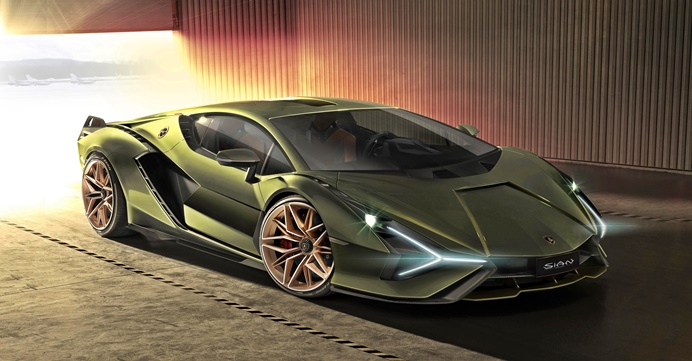
There used to be just manual and automatic transmissions, easy enough to differentiate. Then things started to get more varied with the advent of the continuously-variable transmission (CVT), dual-clutch transmission (DCT), Sequential Manual Transmission and others. For motorists, it was still basically manual or automatic, of course, but manufacturers have had a greater choice in the past three decades.
Now joining the list is Hyundai Motor Group’s (HMG) Smartstream Intelligent Variable Transmission (IVT). The Korean group is one of the few automakers that has invested a lot of money to develop and make its own transmissions, the independent approach justified because it has the vehicle volume. Many manufacturers have relied on transmission specialists to supply to them as transmission development and production can be very capital-intensive.
Smartstream powertrain family
Smartstream is the name of HMG’s global powertrain family which is mainly engines and transmissions. The IVT is one of them and uses the characteristic of high-efficiency CVTs as the foundation and improves the responsiveness and gear-shifting feel.
Theoretically, higher-speed transmissions allow for more efficient use of the engine power. But since the weight and volume also correspondingly increase, increasing the transmission speeds indefinitely isn’t really an option.
The CVT opts for a unique structure to overcome this limitation: as the name suggests, it continuously varies the gear speed to match the RPM that is optimal for the engine power output and efficiency. CVTs have the structure in which two pulleys connected to the engine output shaft and the driveshaft are linked via a belt. The belt contracts and expands to alter the diameter of the pulleys, thus varying the gear ratio.
Drawback of a CVT
But the CVT is not without its drawbacks: the pulleys and the belt often slip against each other. This slippage is particularly visible in metallic belts, where the pulleys apply pressure to the narrow area on the belt’s side to adjust the diameter.
Benefits of the IVT
HMG’s IVT uses a chain belt, the first of its kind in the segment, to address this issue while keeping the benefits of the CVT. The chain belt’s strong point is that it uses the belt tension to adjust the pulley diameter, thus eliminating instances of slippage and improving efficiency in power delivery. The chain belt also has a longer lifespan and is maintenance free, which makes it more reliable.
Additionally, CVTs typically keep the engine revs fixed while increasing the vehicle speed, giving a ‘rubber band feel’. To address this issue, the IVT reproduces the manual transmission’s shifting pattern that better reflects the driver’s intent and driving conditions, making it feel more responsive in general.
Rather than having no set gear speed (as in CVTs), the driver can also take advantage of the virtual gear speeds generated by the IVT as needed, which do a great job in approximating the fun feel of the manual transmission.
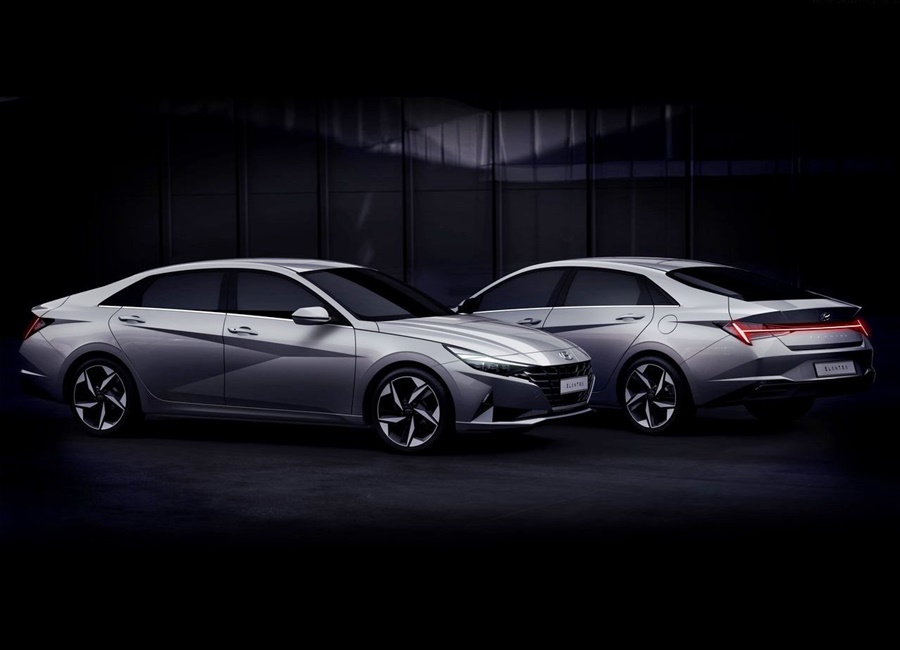
Coming in new Elantra next year
The IVT, made by Hyundai Transys, a subsidiary of HMG, is fitted to various HMG Kia and Hyundai models. Malaysians will get to experience it in the new Elantra which will have an 8-speed IVT. The new model will have a Smartstream 1.6-litre 4-cylinder 123 bhp/154 Nm engine and with the IVT, a 4.2% improvement in fuel economy and a 5% to 8% reduction in engine power loss are claimed.
Click here for other news and articles about Hyundai.
The Takata airbag matter may have quietened down after many years of frantic efforts by many car companies to get owners of affected vehicles to have the dangerously flawed airbag inflator replaced. Nevertheless, with millions of vehicles affected – the largest ever recall exercise in history – there are still vehicles out there which have not had the crucial replacement done.
Honda Malaysia was among the companies which was very pro-active and should be commended for its strong commitment and efforts. And it has not stopped trying to make sure that every single affected vehicle has its airbag inflator replaced. Of course, a 100% score is probably impossible but it should be close to that achievement.
The company now has identified another 2,784 units of Honda vehicles which also need to be recalled as a preventive measure to carry out the replacement of the driver’s side airbag inflator. These vehicles are the 1999 model year Accord and 2000 model year CR-V. All currently sold models are not affected.
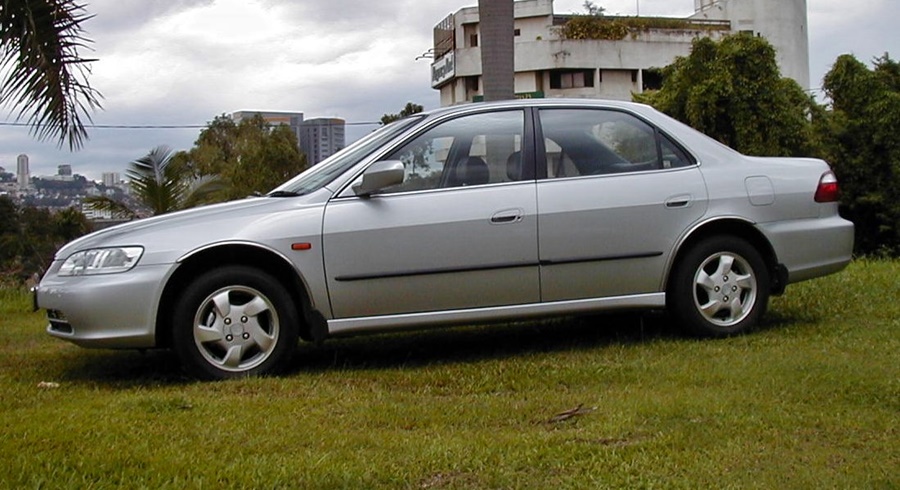
Warranty ended but replacement free
Yes, they are pretty old models, which goes to show how far back the problem went. Fortunately, the manufacturers have not dismissed the matter as being something ’beyond the warranty period’ and have taken the necessary action even over 20 years after the vehicle was sold. This is, after all, literally a matter of life and death.
In case you have forgotten what the fatal flaw was, it was related to the inflator module for the airbag system. In certain cases where inflation was triggered, the internal pressure – already very high – would become critically high and break the module. This would send sharp metal pieces shooting at the driver or front passenger, some cases causing serious injuries that led to death.
So it’s a very, very serious problem that needed to be fixed. While there were incidents, some fatal, all over the world, Honda Malaysia says that it has no report in Malaysia of any incidence or injury caused by the Takata driver front airbag for these two particular models.
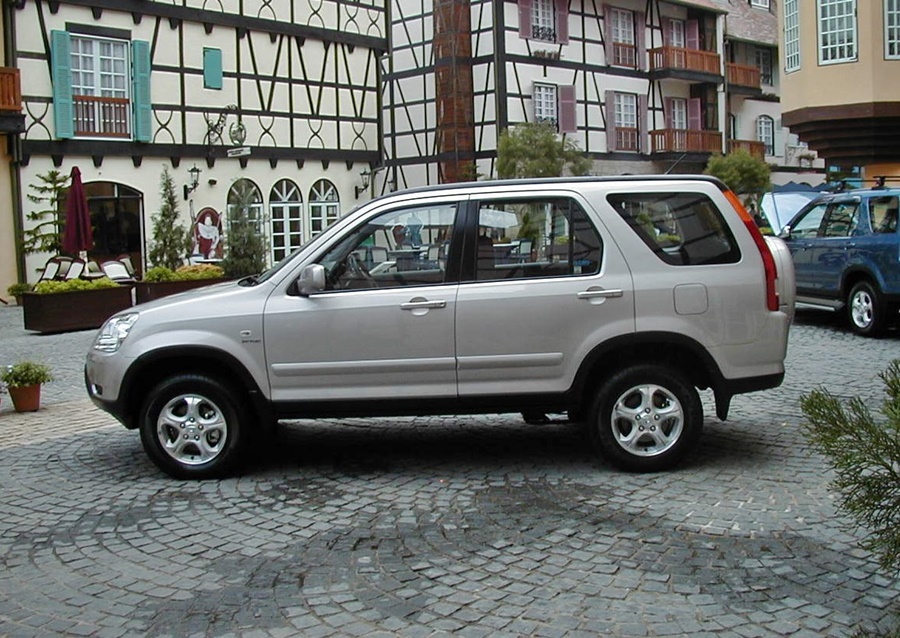
As before, the owners of the affected will be informed via notification letters. They will be asked to contact any authorized Honda dealer to make an appointment to make the replacement (subject to parts availability).
Current owners may not be known
However, one problem that could be faced is whether the current owners of the vehicles get the recall letters. As the vehicles are already 20 years old, ownership is likely to have changed and Honda Malaysia may not have the contact details of the current owner. And the original owner who receives the letter may also not know who has the vehicle now, so the latter can’t be forwarded.
Honda Malaysia hopes that members of the public who have relatives or friends owning these two models can help to make them aware so they can contact Honda Malaysia for assistance in getting the replacement inflator module. All parts and labour related to this recall will be borne by the company.
Owners of who are unsure if their vehicle is affected can obtain information by calling Honda Toll Free number at 1-800-88-2020 or visit the Honda Malaysia Product Recall page to check their vehicle status.
Honda Malaysia also wishes to remind the public that there are Standard Operating Procedures (SOPs) introduced during the Movement Control Order (MCO) which are still in force nationwide. To protect the well-being of customers and Honda personnel, the company requests customers to make an appointment in advance and adhere to the SOPs when they are at the service centre.
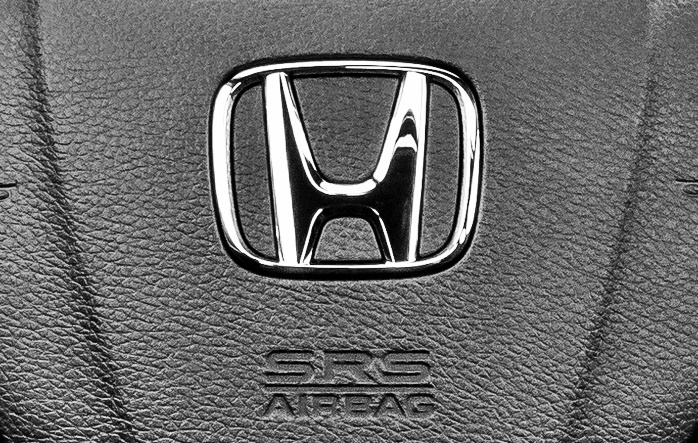
Volkswagen has announced the most powerful Tiguan to date: the Tiguan R. With a power output of 320 ps, the SUV can accelerate from 0 to 100 km/h in 4.9 seconds, it is claimed. The capability comes from the EA888 evo4 TSI turbocharged engine which also generates up to 420 Nm between 2,100 rpm and 5,350 rpm.
Developed by Volkswagen R
The Tiguan flagship was developed by Volkswagen R, the carmaker’s high-performance division. It’s not just the impressive performance that characterises the Tiguan R but also the extensively customised equipment. The exterior has R-designed bumpers with aerodynamic elements in high-gloss black or matching the body colour chosen by the customer.
The exterior mirror covers are in matt chrome and there is a unique and also high-gloss black rear diffuser, black wheel housing extensions and 20-inch Misano alloy wheels (21-inch available as option). The exterior of the Tiguan R can also be personalised with the Black Style design package.
Exclusive interior fittings
Inside, the Tiguan R sets presents a sportier ambience with features such as stainless steel pedals, premium sport seats that have integrated head restraints and R logo developed exclusively for this version. The Digital Cockpit, a highlight of the latest generation of Volkswagens, is additionally customised with an integrated lap timer and sports R-specific decorative trim in Carbon Grey. The decorative trim elements are illuminated via the background lighting.
New 4MOTION all-wheel drive system
Power from the 4-cylinder engine, with a 7-speed DSG, is distributed to four wheels by the new all-wheel drive system. This is the 4MOTION system with R-Performance Torque Vectoring. Volkswagen engineers have incorporated a rear final drive with two multiplate clutches for the first time which not only distributes power between the front and rear axles but also variably between the left and right rear wheels.
With the new all-wheel drive system, Volkswagen claims that there is noticeably improved handling agility when cornering, making the Tiguan R’s driving dynamics a new benchmark for SUVs.
Other technical R equipment includes a powerful 18-inch brake system with blue brake calipers, a DCC chassis (with adaptively controlled shock absorbers) lowered by 10 mm, and a driving profile selection enhanced for the Tiguan R with an additional R profile. This particularly sporty mode can be activated directly by means of a blue R button on the new multifunction sports steering wheel. The ESC (Electronic Stability Control) can be deactivated by drivers who are skilled and want to explore the performance limits.
As standard, the Tiguan R comes with a 4-branch sports exhaust system but customers can also choose the optionally available titanium exhaust system from Akrapovic and 21-inch Estoril alloy wheels.
Volkswagen’s bestseller globally
While many may think the Golf is Volkswagen’s bestselling model, that is not so and the Tiguan is its bestselling model today. It is relatively young in the carmaker’s range, having been introduced in 2007. However, that coincided with the rapid growth in the SUV segment globally, and with the timing being right, sales rocketed.
The annual volumes have increased almost eightfold since the first full year of production. In 2019, one in seven of the 6.18 million Volkswagen vehicles manufactured was a Tiguan, for a total of 910,926 units. In fact, a Tiguan left the production line every 35 seconds last year – a new record for the model.
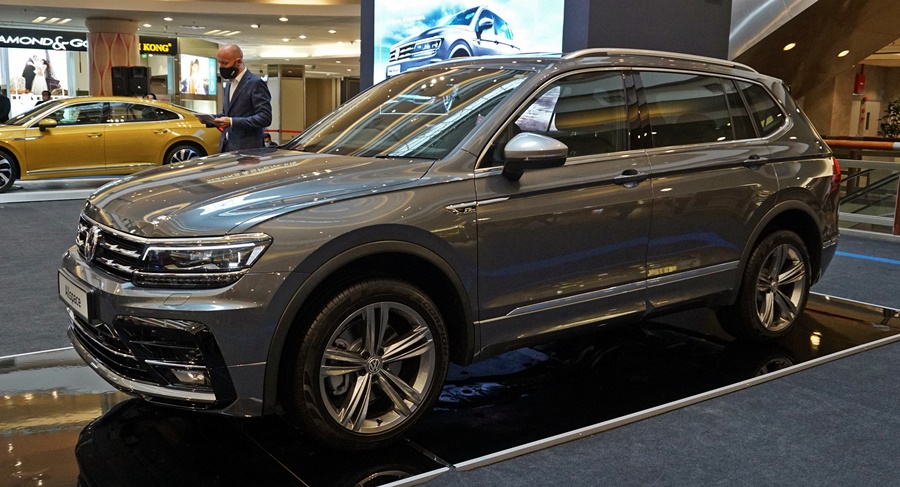
Hand-sketched racing scenes on and in the car, diamond-cut aluminium and a reminiscence that have come true of Bugatti’s glorious Grand Prix days. These can be found on the Chiron Sport ‘Les Légendes du Ciel’, which honours the brand’s famous racing drivers from the last century.
“Bugatti has had close associations with aviation since the company was established more than 110 years ago. Many successful Bugatti racing drivers, such as Albert Divo, Robert Benoist and Bartolomeo ‘Meo’ Costantini, flew for the French Air Force, the French aviator legend Roland Garros privately drove a Bugatti Type 18 to be as fast on the road as in the air,” said Stephan Winkelmann, President of Bugatti. “It is therefore almost an obligation for us today to pay tribute to the legends of that time and dedicate a special edition to them.”
The ‘Daredevils’ who raced the car
Ettore Bugatti admired the fearless character and technical expertise of his drivers who were fascinated by high speeds – and also mastered them. On the road, the racing drivers benefited from the experience gained in aircraft cockpits. Known as the ‘Daredevils’, many of them were former flying aces, daredevils, technically skilled pilots who flew without fear.
They in turn admired Ettore Bugatti for his talent as an engineer and were fascinated by his agile, light and speedy cars, embodying on the road what their planes were in the sky. Roland Garros even called him the ‘incomparable artist who alone knows, how to give life to steel’.
The company’s founder was always inspired by aviation. Sometime around 1915, he personally designed aircraft engines and from 1937, he also developed an entire aircraft intended to break speed records. The project was stopped because of the outbreak of the Second World War, but Bugatti kept in close personal contact with the pilots throughout his life.
The ‘Les Légendes du Ciel’ edition
These legends of aviation are honoured with the ‘Les Légendes du Ciel’ edition, based on the Chiron Sport and limited to 20 cars. The new edition references many features of the historic aircraft in which Bugatti pilots flew. In addition to the unusual colour of the paintwork, each car comes with a special full leather interior with hand-drawn sketches and diamond-cut aluminium.
A striking feature of the Chiron Sport ‘Les Légendes du Ciel’ is its special, matt-grey ‘Gris Serpent’ paintwork. This is, a modern interpretation of the exterior colour of the aircraft from the 1920s. On the extending rear spoiler is a high-contrast, white gloss centre stripe.
The front wings are adorned with the ‘Les Légendes du Ciel’ logo. The ‘Le Bleu-Blanc-Rouge’ tricolour in Blue, White and Red decorates the front area of the side sills made of exposed black carbonfibre.
The horseshoe-shaped radiator grille also has a black gloss finish. The radiator grille mesh is made of laser-cut and deep-drawn aluminium, on which the dynamic pattern of the stitched seams is repeated on the leather seats, reminiscent of planes flying in formation in an air parade.
The door entry lights project the edition logo onto the ground when the doors are opened. The door sills are made of brushed aluminium with the special edition logo on the middle console inlays. The W16 engine cover is made of black exposed carbonfibre and the lightweight components are contrasted by white lettering. Black exposed carbonfibre and a black-coated exhaust trim cover made of 3D printed, high-temperature-resistant Inconel dominate the rear.
Interior almost completely in leather
The interior also visually evokes aircraft from the past century. Fine ‘Gaucho’ leather for the entire cabin, the light brown colour reminiscent of natural leather in those aircraft of days gone by. The natural material is contrasted only by aluminium trim.
As would be expected, each car will have special edition numbering ‘1 of 20’. Customers can also specify comfort seats and the ‘Sky View’ glass roof to look into the sky like in open-top aircraft of the past century.
On the door panels there is a hand-sketched racing scene between the Nieuport 17 aircraft and a Bugatti Type 13, which symbolizes the two souls honoured by the edition. The Type 13 is a very special model in Bugatti’s 110-year history as it was the first model to bear the name ‘Bugatti’.
Capable of more than 420 km/h
The Chiron Sport ‘Les Légendes du Ciel’ has the standard W16 engine with a displacement of 8 litres. Delivering up to 1,500 ps/1,600 Nm, its maximum speed is somewhere beyond 420 km/h but limited to that speed.
Bugatti will start production of the special edition towards the end of 2020. In the meantime, if you are keen to own one of the 20 units, the price starts from 2.88 million euros (around RM14 million).
Click here to read other news and articles about Bugatti
During the 1960s and up till the Japanese economic ‘bubble’ burst in the early 1990s, the Japanese carmakers offered a much wider range of model variants than today. Each model would have a number of bodystyle variants – typically sedan (2-door and 4-door), hatchback, coupe, hardtop and stationwagon. But after the economic bubble burst, numbers became very important and small numbers meant that the variant and even model could no longer be justified.
The decline in sales of coupes, for example, saw the popular sports models like the Toyota Celica and AE86 Levin, Nissan Silvia and Honda Prelude being retired while resources were focused on the big number models and mainly sedans. When SUVs started to become hotsellers, that segment got a lot of focus and product developers got a lot of money.
It’s still a ‘big numbers’ game today and when a sizable niche is identified, then dedicating a variant to it may become justified. This would seem to be the case with the Honda City which has been a sedan all along since being introduced as an ‘Asian Car’ in the mid-1990s (disregarding the fact that the original City was a small hatchback in the 1980s). It’s done very well, especially in the ASEAN region, and has reached the seventh generation.
City Hatchback takes place of Jazz/Fit
Now, exactly a year after the latest generation was launched in Bangkok, Honda has introduced a hatchback variant for the first time. Where the Jazz/Fit used to have a relationship with the City, it appears that Honda has now decided that the City can have its own hatchback, allowing the Jazz to be developed along other lines (perhaps towards full electrification).
As the Fit, the hatchback did very well and reflected the different tastes of new Japanese consumers when it was first introduced in the early 2000s and became the first model to beat the Toyota Corolla to become the bestselling car in the domestic market. However, in recent years, it seems that the appeal of the model has dropped in some markets, notably the USA where it will no longer be on sale after this year. This could well be due to the HR-V having higher appeal with its SUV image.
The declining numbers of the Jazz may even see further development stopped or as mentioned earlier, it will become a full EV model. Meanwhile, there are still people who would like a hatchback instead of a sedan and the move to provide such a bodystyle as a variant of the City would appear to be a clever move. Certainly, it will be a direct rival to the Toyota Yaris, a relation of the Vios.
Traditional conversion from sedan to hatchback
The development of the City Hatchback looks like quite a straightforward job, not unlike the variants of the 1980s where the front half was common to virtually all variants, with the rear half being styled differently. In this case, the third ‘box’ of the 3-box sedan bodystyle has been removed and the roofline slopes downwards to the rear. A very traditional sort of hatchback, one might say.
Hatchbacks are usually shorter than their sedan brothers and a comparison with the latest City shows a difference of 208 mm as the overall length is 4345 mm. However, the wheelbase is similar, as is the width, but the top of the roof is 21 mm higher from the road.
While the Jazz has more ‘extroverted’ styling, the City Hatchback styling seems to take the safe route to appeal to a broader range of buyers, including those who might normally only like a sedan. Those who like a hatchback often see it as a practical car with more variability in accommodating people and cargo.
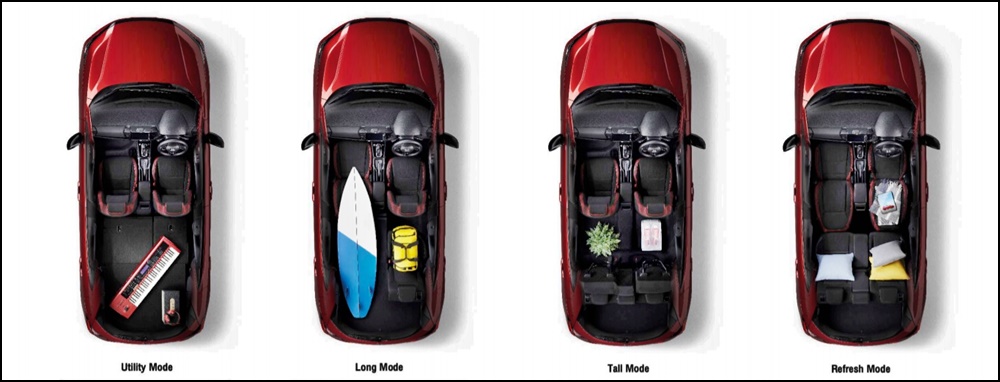
Versatile interior layout with ULTRA seats
The Ultra Seat concept is adopted, this having first appeared in the first Jazz. It’s a simple but very clever idea with the rear seats able to be raised so as to provide a tall space to carry things like plants. Like other hatchbacks, the backrests can also be folded to lengthen the cargo compartment for longer items.
From what can be seen in the pictures, the cabin is pretty much the same as the latest City. This obviously allows Honda to save money by sharing many items, a skill that the Japanese developed to gain an advantage in reducing production costs.
1-litre turbo powertrain with CVT
Only one powertrain with a CVT is offered for the City Hatchback – the 1-litre turbocharged 3-cylinder VTEC engine which produces 122 ps/173 Nm. Similar to what is offered in the sedan, the small engine size is okay for Thai buyers but still a question mark for Malaysians, hence the Malaysian City having a 1.5-litre unit. Edaran Tan Chong Motor has made a bold decision (not that it really had a choice) to offer a 1-litre turbocharged engine in its all-new Nissan Almera so we’ll see if that helps change perceptions.
City Hatchback or New Jazz for Malaysia
It would make sense for Honda Malaysia to offer the City Hatchback but whether a variant has been developed with a 1.5-litre powertrain is not known. Jazz sales have been okay in Malaysia and there is a new generation already on sale in Japan but it may save money to assemble a variant of the City rather than invest in jigs for a new Jazz generation.
Another possibility is that Honda could use the City Hatchback to gauge response to the 1-litre engine. It has seen a successful transition in downsizing the engines of the Civic and CR-V to 1.5 litres and times could well have changed that Malaysians no longer ask ‘can go up Genting or not?’ when they see a 1-litre engine.

Between 2009 and 2018, Aston Martin scored two 24 Hours of Le Mans class victories (in 2014 and 2017) and seven FIA World Endurance Championship titles, as well as numerous international sportscar championship titles in British GT, GT World Challenge (Europe) and the European Le Mans Series.
This was one of the most successful periods in the luxury British sportscar brand’s racing history and in commemoration, as well as to pay tribute to one of the company’s most successful racing cars, Aston Martin Racing has created the Vantage Legacy Collection.
The trio of Legacy Vantages, based on V8 Vantage road car launched in 2005, have been created in Aston Martin Racing’s workshops and are being offered for sale as a collection. This includes a V8 Vantage GTE, a V12 Vantage GT3 and Vantage GT4.
All three are brand new chassis, ready to race, and have been identically liveried in sterling green with the distinctive and classic Aston Martin yellow trim lines around the radiator and cant rail.
Vantage GT4
The Vantage GT4 was the first racing car created around the VH-era architecture. It made its debut in 2009 and, by the end of 2018, Aston Martin Racing had built 107 cars, winning races and international championships across the world. Many of these cars are still competing today. The car in the collection is the 108th and final car to be made.
Vantage GT3
The V12 Vantage GT3 followed the GT4 three years later, making its debut in 2012. It soon became the dominant car in the British GT championship, winning outright titles in 2013, 2015, 2016 and 2018, proving its competitiveness right up until it was replaced by the new Vantage in 2019. Over 7n years, up until the end of 2017, 46 cars were built.
Vantage GTE
The V8 Vantage GTE made its debut with the Aston Martin Racing works team in 2012 at Sebring. It spearheaded Aston Martin’s works return to production-based racing following three years of competing in the LMP1 class. The V8 Vantage GTE took its first win at the final round of the FIA World Endurance Championship in Shanghai in October that debut year.
Only six V8 Vantage GTEs were originally built, with the car racing for the last time in the GTE Am class at Le Mans in 2018. During this time, it became the most successful car in the FIA World Endurance Championship, winning 7 titles and two Le Mans class victories, including a famous final-lap triumph in 2017. The GTE in this collection is the seventh and final car to be made, chassis number 007.
“For a collector, this trio of Aston Martin Racing Vantages represents the ultimate tribute to a halcyon period for the brand in international sportscar racing. While Aston Martin has since gone on to record world championship titles with the current generation turbo-charged V8 Vantage, the foundations laid by the huge success of the original car won it admirers the around the globe and led to it becoming a firm favourite with racing fans. The Legacy collection is a beautiful sign-off for this wonderful car,” said President of Aston Martin Racing, David King.
Click here for other news and articles about Aston Martin.
© Copyright – Piston.my 2024 Trademarks belong to their respective owners. All rights reserved